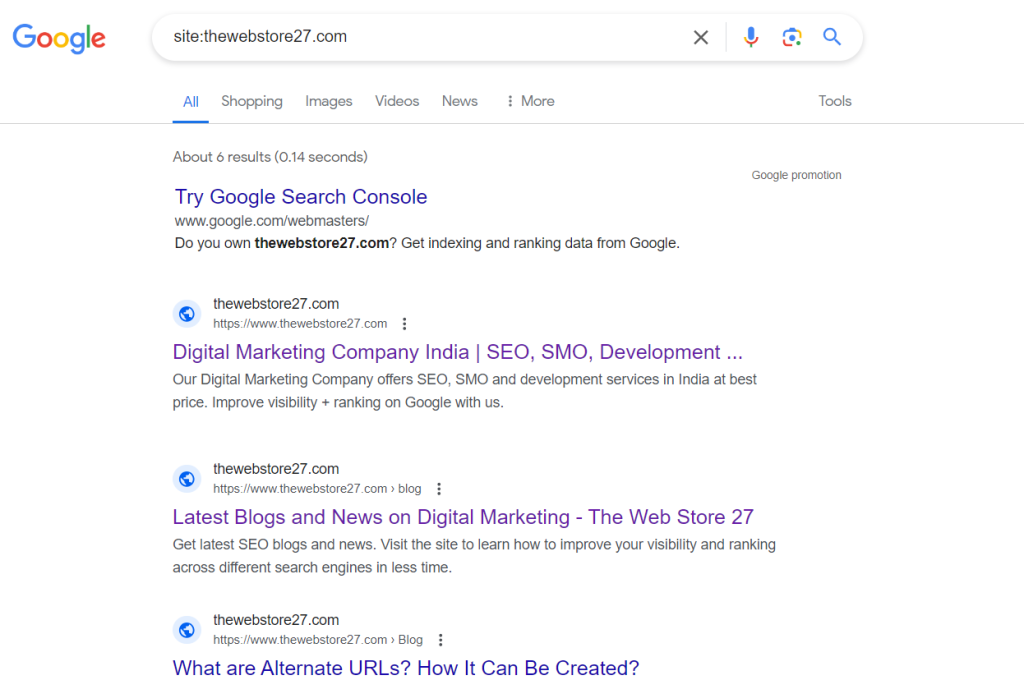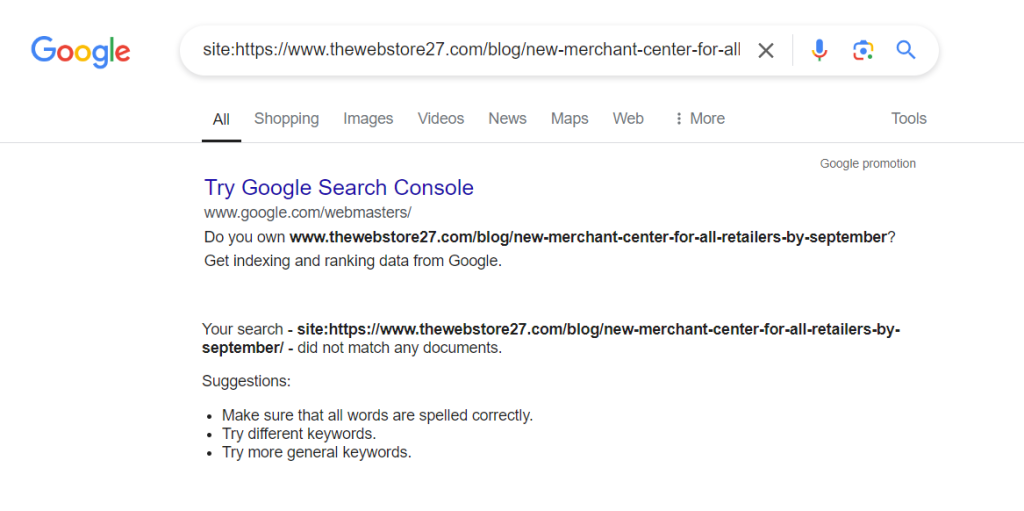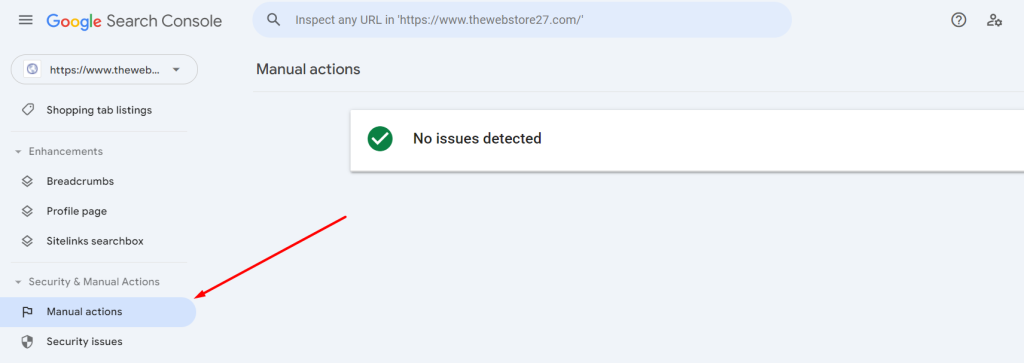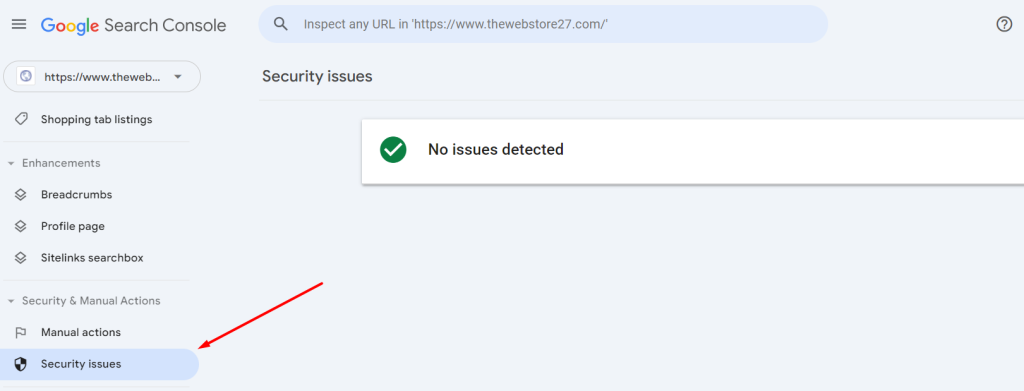11 Reasons Your Website Isn’t Showing Up on Google
From setting up Google Analytics to website crawling, you did everything right, but still, your website is not visible in Google SERP, why?
Lots of business owners end up asking the same question.
Here is the bad news: There might be something that you would be doing wrong, thus preventing the site from showing up on Google.
The good news is you can fix it on your own. Here’s how.
Explore the possible reasons why your entire website is not showing up on Google or other search engine results pages.
But, Before we proceed…
Remember, we are checking why the entire website is not appearing on the SERP rather than for a specific search term or specific query.
When you have added a search term on Google search and your website doesn’t show up on the list, it is a different story. Right now, we are focusing on whether you type in your website on Google search and your web domain or site doesn’t appear in SERP.
This basically happens when Google is unaware of your existence or believes it isn’t worthy of being ranked.
The checklist below can help you fix all these three issues:
1. Google is well aware that your website exists and its crawlers can easily discover and access your webpages.
2. The keyword you wish to appear for has relevant content on the page.
3. You’ve proven to Google that your page is more deserving of a ranking for your intended search query.
Let’s start now.
1. It’s too early for your website.
If you have recently purchased a domain and designed a website, it might take some time for Google crawlers to discover new pages and index them. For example, if you launched your website last night, there is a high chance that Google doesn’t know about your existence yet, since it is too new.
To quickly check, if Google knows about your web existence, go to Google or any other search engine you want to check your presence and type site:yourwebsite.com
If your website appears as shown in the screenshot, Google knows about your website and has indexed your page. If no results appear on the search results, it means they still don’t know that you exist.

Another thing that you must not miss out on is checking individual page status. The crawler might have discovered your site but is missing on indexing certain pages. So, to check if the specific page has been crawled or indexed, type site:your specific page url.com

Note: When you check the indexing of the entire domain, certain pages don’t show up on the list but when you check individually, it shows up. Here is the reason why all pages do not show on site:query.
Now, what to do if neither your website nor specific individual web pages are showing up on Google?
Create a sitemap and submit it via Google Search Console to speed up the discovery process.
Go to Search Console > Sitemaps > Enter sitemap URL > Submit.
How to Check Your Sitemap? Type website.com/sitemap.xml
If nothing shows up, go to the sitemap generator tool, create a sitemap, and ask the developer to upload it to your site’s root directory. Now, re-check by typing website.com/sitemap.xml
Read More: How to set up a search console for your website?
2. Use Noindex meta tag from Discovering or Indexing Pages
It is important to check your robots.txt file (yourdomain.com/robots.txt) in the beginning because it is a place where you instruct crawlers to visit the website or not.
If you unknowingly instruct Google not to crawl and discover certain pages, it will follow the instructions and won’t make any mistakes.
To instruct a crawler not to index a specific page, you can add a “noindex” meta tag in the head section of a page.
<meta name=”robots” content=”noindex”/>
If any page with this code exists on your website, no matter even if you add the link to sitemap or Google Search Console for index requesting, it will not get indexed.
Well! Since you cannot go to every single page to check coding, Google Console offers an option to view all noindex pages on the website.

3. Blocked Bots from Crawling Webpages
At times during the development process, developers often block crawlers from indexing the site till it is ready using robots.txt file.
Robots.txt is an important file that instructs search engines which all pages and crawlers can visit the website.
If you have disallowed the website or certain webpages in your robots.txt file, you may end up showing no results in SERP.
Make sure that your website is not blocked for crawlers after it is ready by visiting the robots.txt file.

If there is a / after disallow: it means you are blocking the crawlers from accessing the entire website. So, check on this feature as well.
Once again, even if you submit the sitemap but have blocked the page on the robots.txt file, it will send an alert in the search console highlighting the issue.
You can manually check the file just by typing – yourdomain.com/robots.txt
Make sure to remove all the directives that block your content and prevent it from indexing on Google.
Note: A 404 error on looking for a robots.txt file (yourdomain.com/robots.txt) means you don’t have one. Learn how to write and submit a robots.txt file
4. Not Optimized for Mobile Users
In 2023, Google completed its last mobile-first indexing switch. Google even stated that it would favor sites that prioritize mobile experience. Thus, another basis for rankings on search results.
It’s not something that Google will not completely index your site, but yes, it will uplift other results that prioritize their mobile experience.
5. Lack of High-quality Backlinks
Even if you have fixed all the crawlability issues and technical requirements, Google is still failing to find your page. The reason is backlinks.
You need to prove to Google that your website is trustworthy and deserves to be ranked by creating quality backlinks.
There are many other factors that play an important role in Google’s algorithm, but creating quality backlinks from unique websites is a strong one.
If your competitors are getting backlinks from trusted platforms, there is a high chance that they will show above you in Google.
You can check your backlinks or referring domains using various trusted SEO tools in the market. So, make sure to use one and increase your backlink count.
6. Lacks Page Authority and Domain Authority
In 2016, public access to PageRank was removed, however, it is still used as a key factor in the Google ranking algorithm.
This factor helps count the number of backlinks and internal links as votes.
Having a high PR score implies you have more authority on that specific page. The best way to boost it is to create more backlinks and internal links.
In Ahrefs, there is a metric that is quite similar to PR, i.e. URL rating (UR).
Most people confuse PageRank (PR) with Page Authority (PA). Here is how they differ.
Domain Authority is another key signal used as a ranking factor. It is measured on a scale from 0-100, the higher the better. A less authoritative site would find it difficult to rank on Google. You can use different domain authority tools to check your status.
7. The website does not match “search intent”
Google has always aimed to deliver quality content to its users. If it finds that the content generated by your website is not useful or relevant to the query, it won’t rank you on top.
Hence, ensure that your content aligns with the search intent of the query.
Let me make it easier for you.
Search Intent is basically what the user wants to achieve on typing a query.
For instance, if you type “buy iPhone” on Google, it will pen down top companies and products on the search results where you can click and purchase a product.

Similarly, if you type “latest iPhone” on Google, it will show you a mixture of e-commerce portals and informative sites.

So, it is important to understand the search intent behind search queries and then target keywords.
Remember, there are 4 types of search intent: Navigational intent, Informational intent, Commercial intent, and Transactional intent. Learn about these in detail here.
In this case, you run an e-commerce portal and want your website to show up on the “latest iPhone”.
Firstly, the sites ranking at the top must be having a good Domain rating, URL rating, and referring domains.
Secondly, Google is aware that users searching for this query do not wish to see a sales page, so it does not rank them.
8. Content Quality Issues
Content quality is another factor that can lead to your site not been shown up in search results.
For instance, if your website has too little or no text, search engines might find it difficult to understand your platform.
Duplicate content that is copied from other sites will also rank in search results in most cases.
Spammy content is often ignored by search engines for quality is the key metric in search engine results.
Hence, high-quality content is not only a necessity but a requirement to get indexed.
9. Duplicate Content Issue
Another important issue that most businesses miss out on is duplicate content.
Duplicate content is basically when you have the same or similar web page content on your website.
The main idea behind Google not indexing this type of content is it does not want to show similar information on search engine and manipulate visitors.
In most cases, it takes up the canonical set page. However, if canonical is not set, it selects the best version for indexing.
So, either redirect your pages or canonicalize your duplicate content.
10. Google Penalty
At times, Google penalizes a domain due to spamming, policy violation, and other reasons. Generally, there are two types of Google penalties, such as:
Manual: This takes place when a Google employee manually examines your website and discovers that it does not adhere to their Webmaster Guidelines. It eventually takes steps to either demote or remove your website from the search results. But before making the final call, it always alerts you about them using the search console.

Algorithmic: It takes place when a website or page is suppressed by Google’s algorithm because of quality issues in the search results.
In fact, in some cases, when your website spam score goes too high, i.e. above 70, take action immediately before Google penalizes your website.
Try to disavow spam links by submitting them to the disavow tool.
11. Security Issues Found
Another reason why your website is not showing up on search results can be security issues. If there are security issues, it can lower your page ranking.
So, look for security issues in the search console and fix if found any.

Conclusion
Remember ranking on search results is not a big task that you can’t win over.
You might be missing out on some technical issue, content quality, or any minor fault that would be preventing you from ranking on search results.
So, look out for broken links or controllers and fix technical issues at the initial stage. Ensure that crawlers have free space to discover existing and new content from your website.
Also, analyze your content quality and backlinks, to ensure that it is better than your competitors.
There can be times when you might stand at a lower position on search results but that doesn’t mean you can’t beat your competitor in the race.
Level up your backlink score and site authority to move forward.
Target for low-competition search terms and build a good audience for your brand.
Just remember moving ahead of your competitor should be not your primary goal. Instead, delivering quality service or information to your customers must be the sole priority.
For more such updates, follow me on social media.
